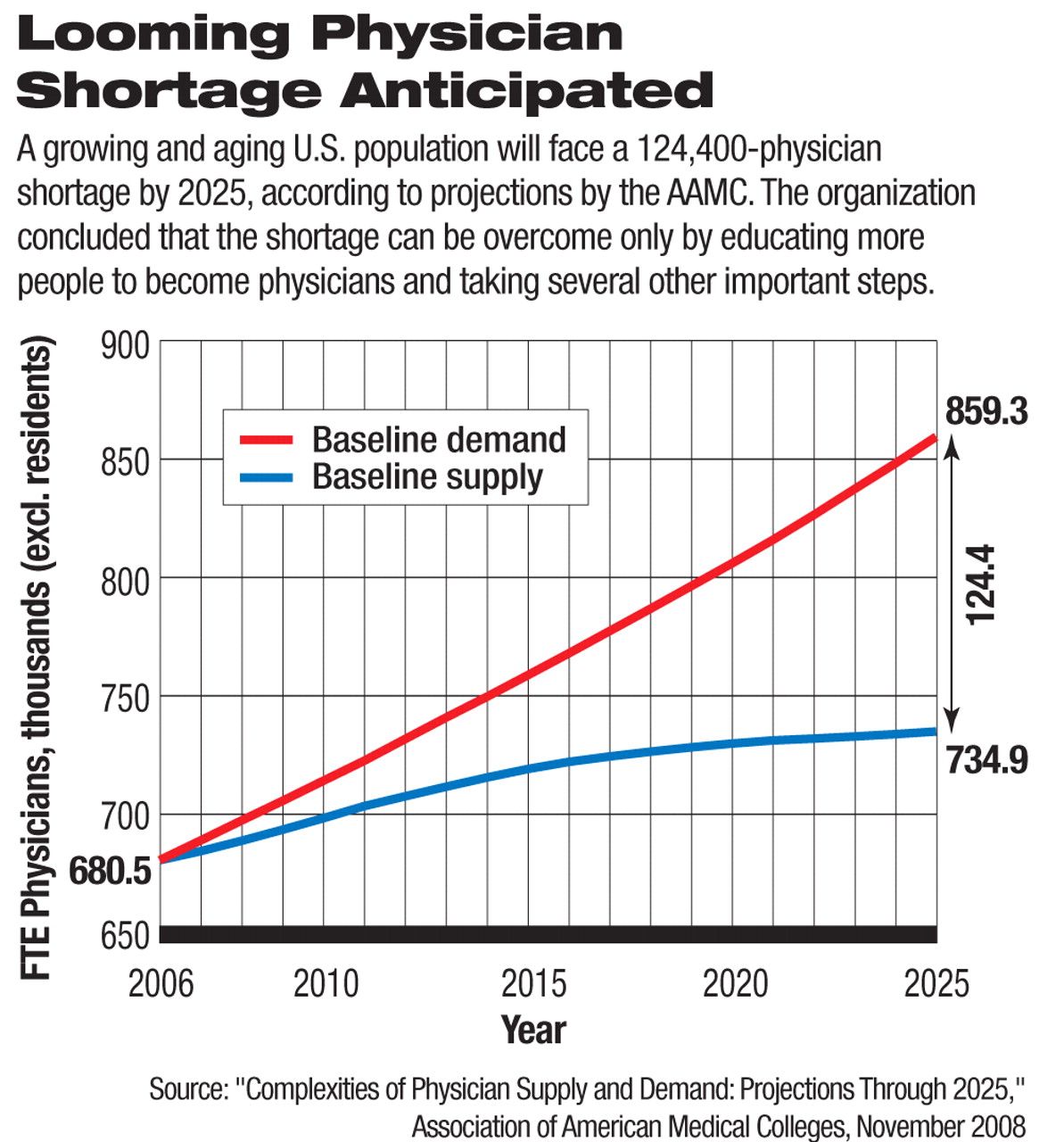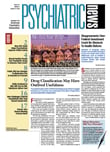A growing and aging U.S. population will face a physician shortage of more than 124,000 within 17 years, according to a report by the Association of American Medical Colleges (AAMC).
The report, released last November, concluded that the number of physicians would increase “modestly” through 2025. The report found that demand for care would grow sharpest among medical specialties, although the category into which the authors placed psychiatry—“other patient care”—was expected to grow the slowest.
The conclusions were based in part on Census Bureau projections that the U.S. population will increase by 50 million by 2025, while the number of physicians is expected to increase by only 54,000. The shortage identified by the report is expected to be exacerbated by increased future demand for physician care and the aging of the U.S. population and of the physician workforce.
The findings follow a recommendation by the AAMC in June 2006 for funding of a 30 percent increase in U.S. medical school enrollment and an expansion of graduate medical education slots to accommodate such growth. Those recommendations were based on previous studies that indicated an impending shortage of physicians.
“A shortage of U.S. doctors would have a profound impact on all Americans by affecting access to quality health care, especially for the underserved who already encounter substantial barriers when seeking care,” said Jordan Cohen, M.D., former AAMC president, in a written statement.
The projected shortage could rise from 124,400 to 159,300 if other possible events occurred, such as enactment of some form of universal U.S. health insurance system.
The report authors noted that the projected increases in the number of U.S. physicians stemmed from the effort of medical schools to increase enrollment, but they concluded that such increases will be insufficient to meet demand. In addition to expanded efforts to increase the supply of physicians, the AAMC report said that health system changes will be needed, including improved health care efficiency and more efficient use of physicians.
Among the steps that could help alleviate the shortage are “modest increase[s] in physician productivity,” which are difficult to achieve due to health care's complexity. Another way to reduce physician demand is to increase the role of physician assistants and nurse practitioners, according to the report authors.

